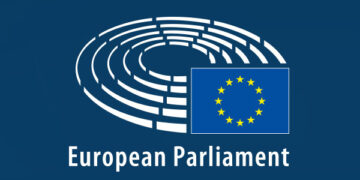The reset deal announced on 19 May between the EU and the UK left many unanswered questions in relation to internal security. Christine Andreeva Gajo argues that rather than negotiating headline-grabbing agreements, both sides would be better served by focusing on the micro-level dynamics of internal security cooperation.
The “reset deal” announced by the EU and the UK on 19 May boasted new agreements on fisheries, defence, food standards and energy, while teasing further agreements covering a number of other policy areas. However, one notable point of difference, among others, was the way the two sides referred to internal security.
UK Prime Minister Keir Starmer and European Commission President Ursula von der Leyen both emphasised different priorities for their future joint internal security work. Moreover, neither mentioned any specific instruments to be renegotiated. While this likely reflects the current lack of consensus on what exactly can and will be reassessed, several concrete inconsistencies can be noted that raise questions about future EU-UK cooperation.
Confusion over e-gates
Many of the headlines covering the agreement focused on the announcement that UK citizens would now be able to use e-gates when travelling to EU countries. However, this was misleading on several accounts.
What Starmer was referring to in this case was the entry into operation of the Entry-Exit System (EES), an automated IT system for registering third-country travellers entering and exiting the EU. This development is not only unrelated to EU-UK cooperation but is in fact not at all new. Its governing regulation was adopted in 2017 and has faced multiple implementation delays.
As third-country citizens, UK passengers are de facto subject to the new system without the need for further agreements, therefore as holders of biometric passports, under the EES they could indeed make use of e-gates, subject to prior registration. Importantly, however, while the EES aims to eventually make travel faster, in the short to medium term it is expected to have the opposite effect.
No mention was made of this, instead Starmer promised that the new chapter launched with the summit would lead to “ending those huge queues at border control”. With the EES’ entry into operation currently foreseen for October 2025, and subject to several stages, it clearly will not affect the summer holidaymakers the Prime Minister alluded to.
While Starmer implied that he will push EU member states for swift implementation, transposing the EES is their obligation towards the EU, wherein the UK has no formal role anymore. While member states will undoubtedly implement the EES differently (with some already using e-gates for British citizens, such as Portugal and Spain), the UK’s advocacy can only go so far in a domain where EU competence precludes bilateral agreements.
Information sharing
Similarly, a reference was made to seamless information sharing in law enforcement, without specifying the channel for which access would be negotiated. The Prime Minister specifically mentioned being able to share facial images for the first time – something that has been possible for EU member states through the law enforcement database SIS-II since 2018. The UK has not been able to benefit from this due to Brexit as it lost its access to SIS-II, which the EU negotiators insisted was not possible to retain for a non-EU, non-Schengen country.
Given that the EU is unlikely to change its mind on that, the exchange of facial images could only be facilitated through another information system, Prüm II. Here again the Prime Minister was misleading in his remarks, as was the post-summit joint statement. The exchange of DNA and fingerprints were enabled by the EU-UK Trade and Cooperation Agreement (TCA), which came into force in 2021, while implementation has been ongoing.
According to the Commission’s 2025 TCA implementation report, by December 2024, 22 EU member states and the UK had provided reciprocal access to each other’s national fingerprint databases, while all members states and the UK had done the same for DNA databases. Similarly, vehicle registration data – also a component of the Prüm system – has been under development in the UK since Brexit and is currently awaiting final approval from the Council of the EU to go live.
The system itself has gained an upgrade at the EU level (dubbed Prüm II), which will include facial images of suspects from interrogations and police records. However, it is not publicly known yet whether the UK has declared its intention to negotiate joining the new system, though a consultation was held under the Sunak government.
While it is possible that Starmer announced his government’s intention to join Prüm II during the summit, it would be misleading to take credit for the current state of EU-UK law enforcement cooperation, which is the result of eight years of diplomatic efforts and advocacy from security practitioners.
Micro-level dynamics
Instead of seeking large and impressive political declarations, both the EU and the UK would be wise to look at the micro-level dynamics of internal security cooperation between their security professionals. Despite the loss of access to real-time information exchange and valuable EU instruments, the bespoke agreement on internal security under the TCA empowers extraordinary levels of cooperation for a non-EU, non-Schengen state.
With practitioners’ interest in continued joint work, the real obstacles to cooperation are bureaucratic hurdles, missing forms and a mismatch of counterparts across agencies. Many of these issues could be resolved by centralising certain processes, clarifying mandates and empowering the existing central bodies to handle the new tasks that have emerged in this domain post-Brexit. It would certainly be less glamorous and flashy, but it is much more likely to guarantee the security of citizens on both sides of the Channel.
Note: This article gives the views of the author, not the position of EUROPP – European Politics and Policy or the London School of Economics. Featured image credit: European Union





































Discussion about this post